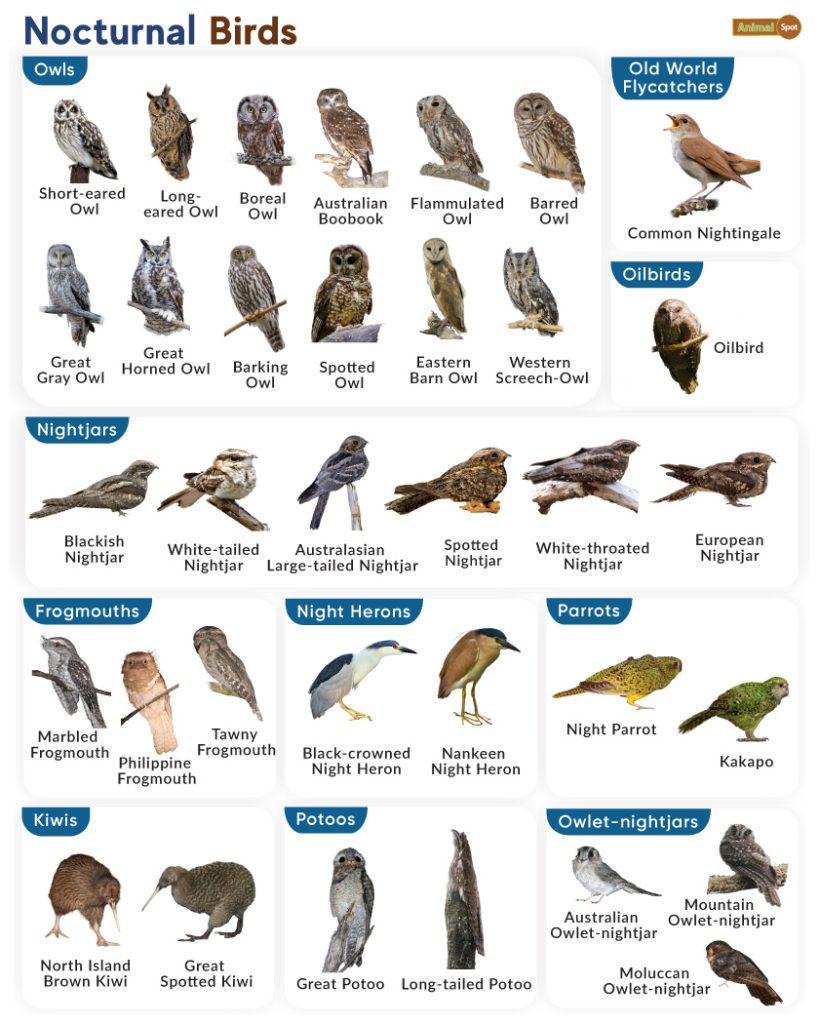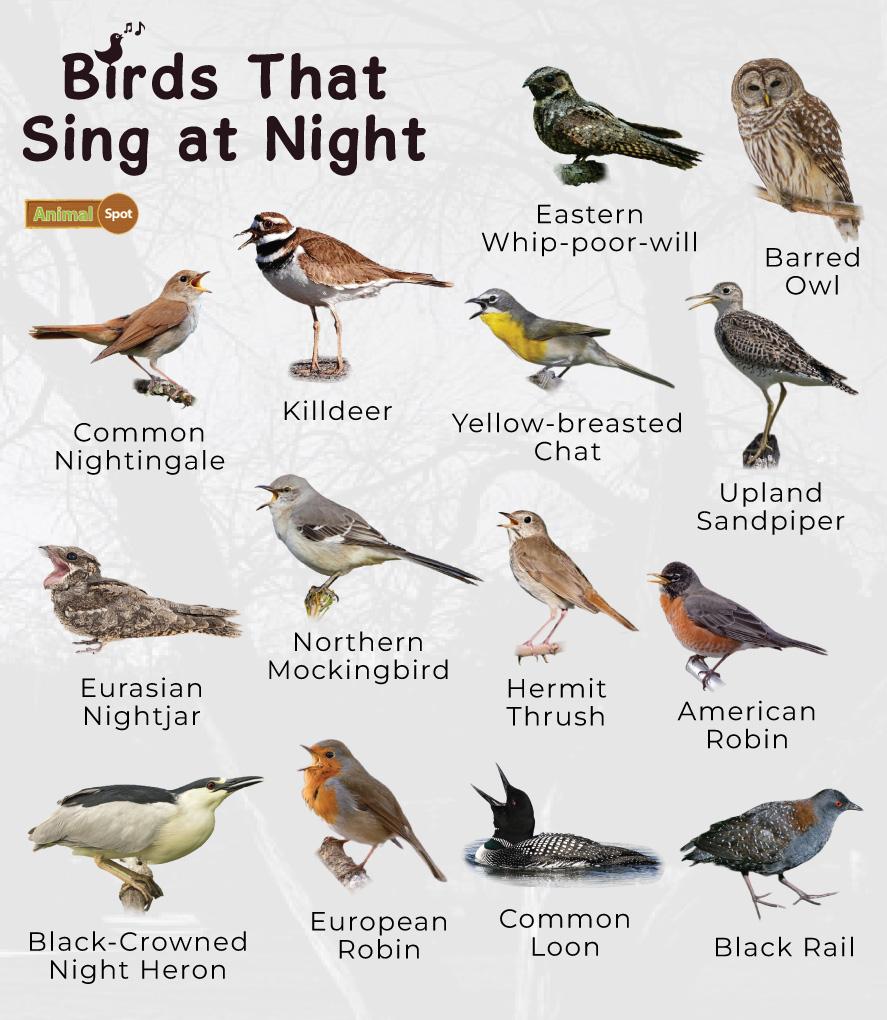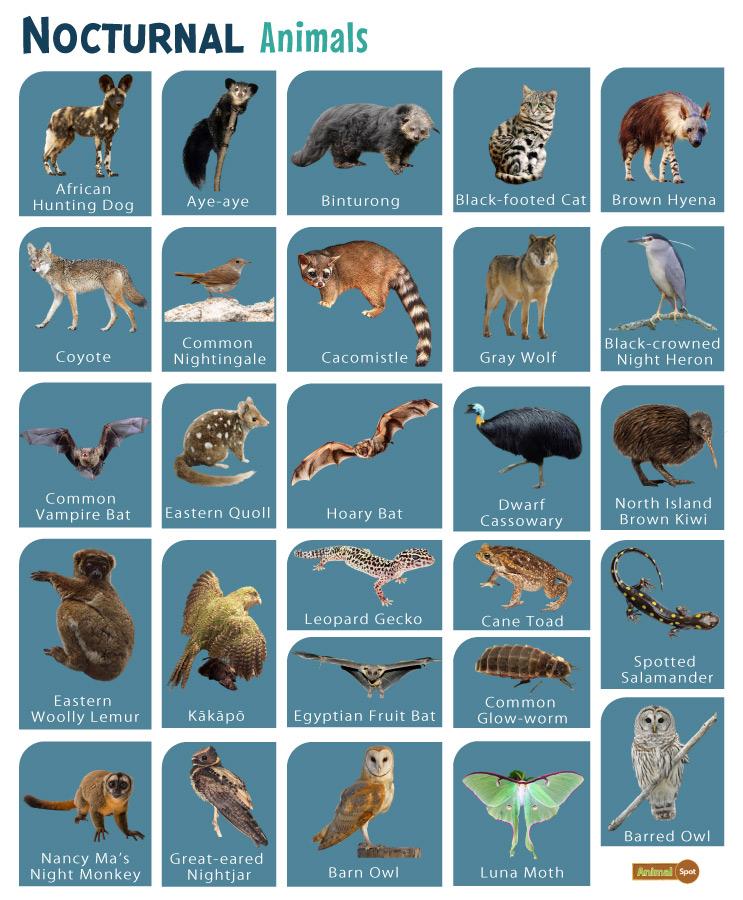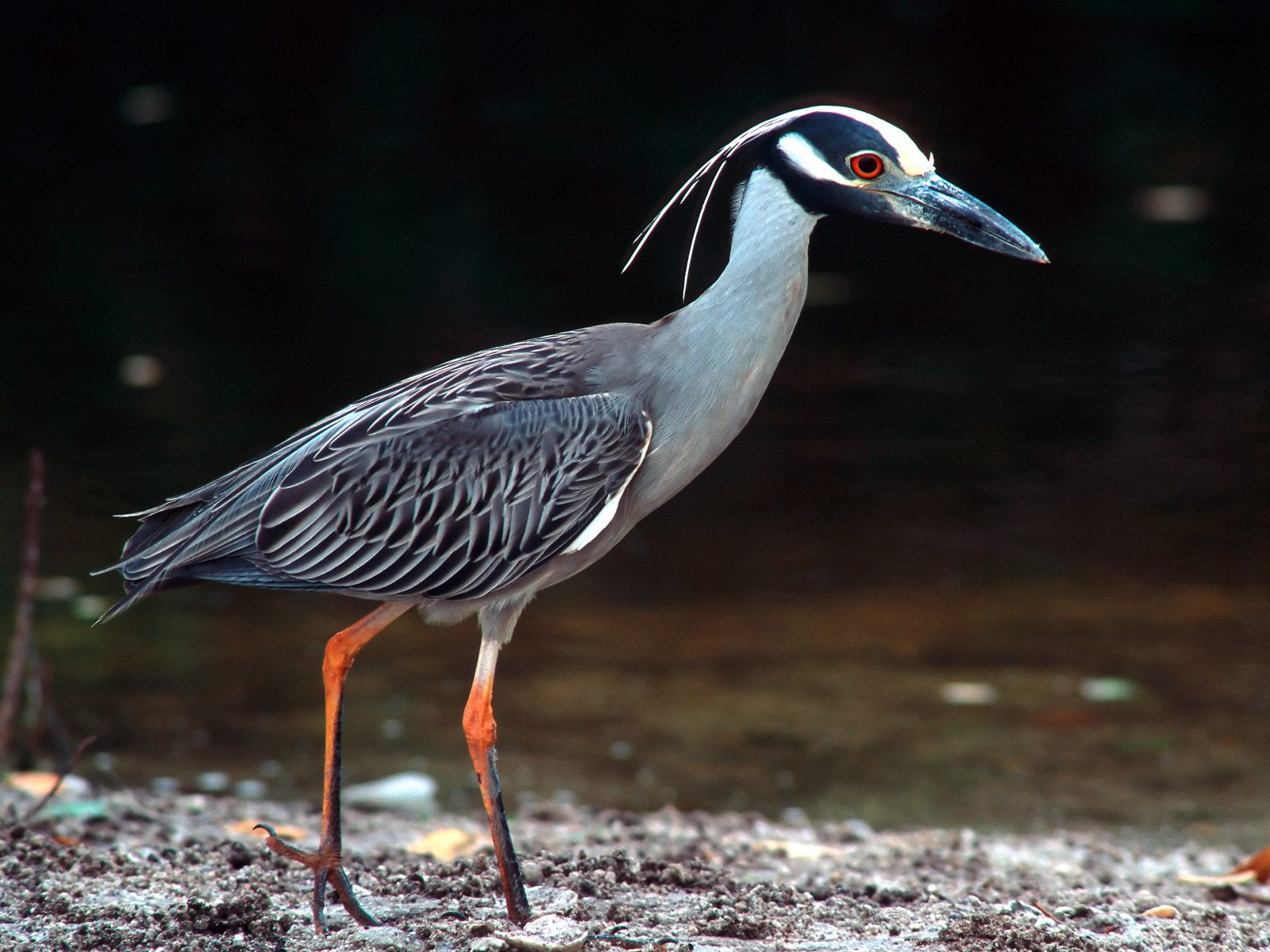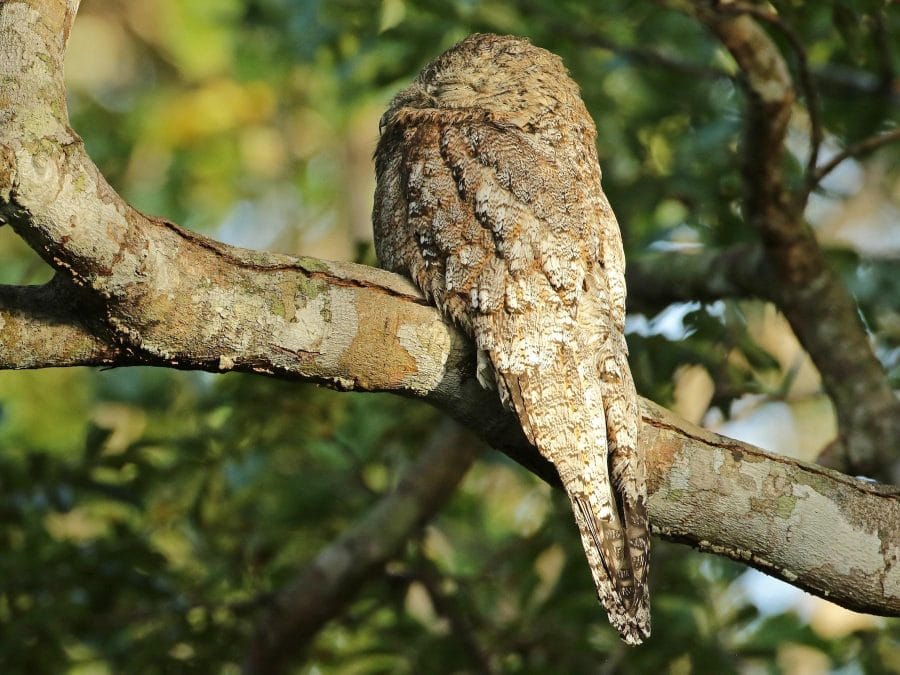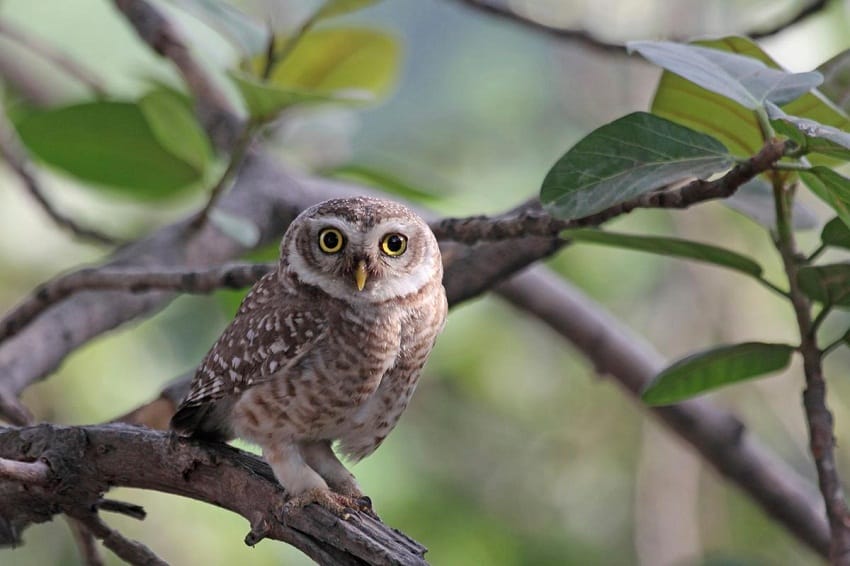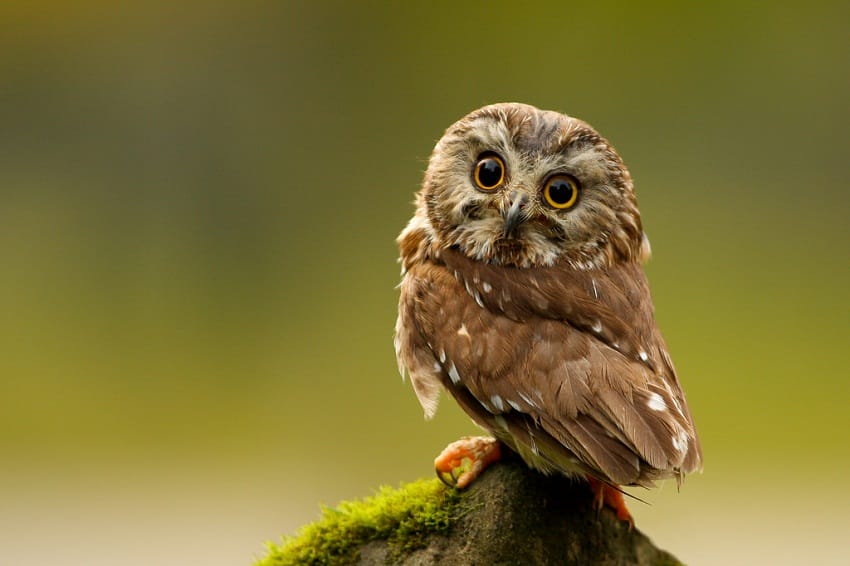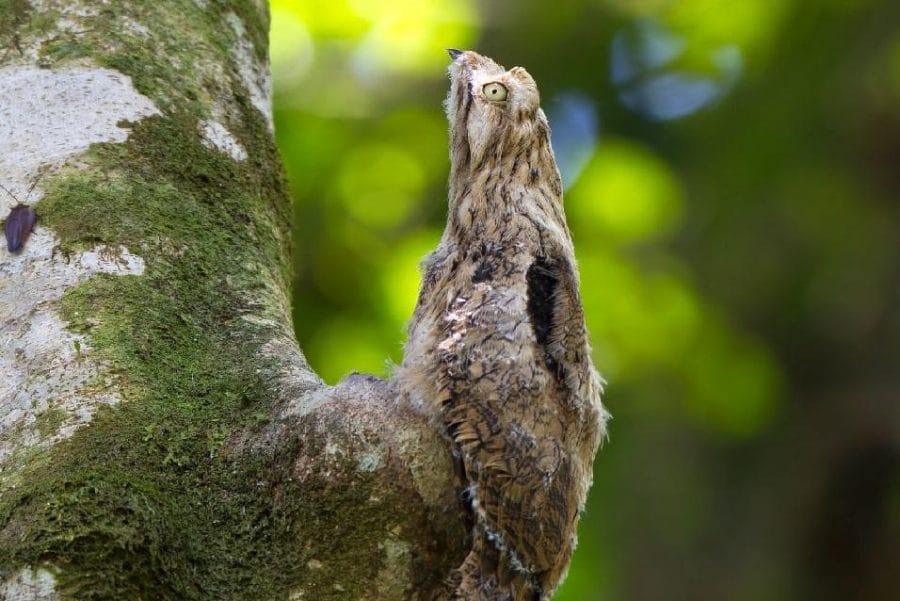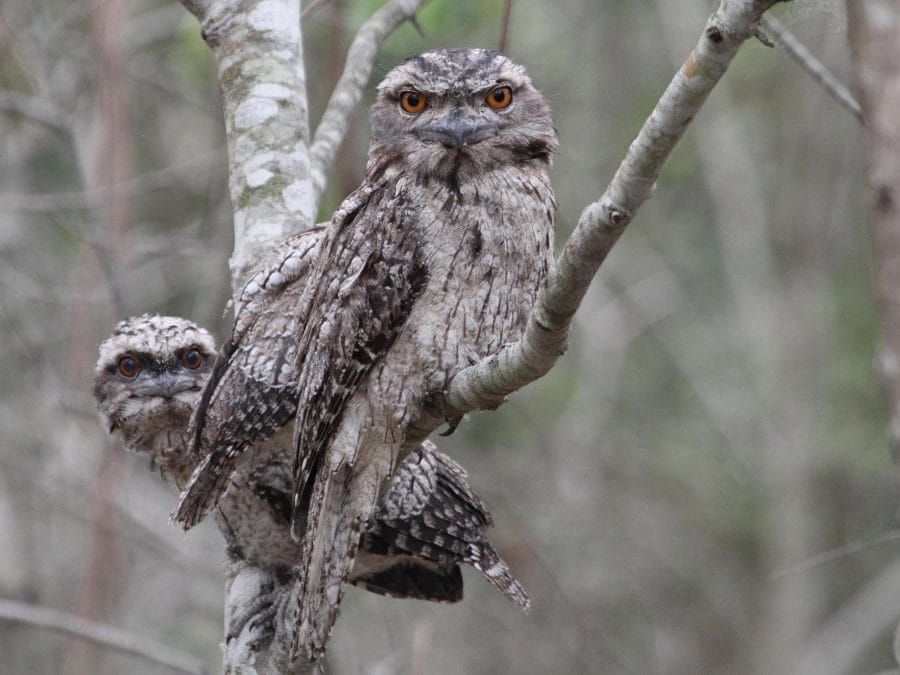Several bird species are known to fly at night, and surprisingly, not all are owls. Other nocturnal birds that fly around during nighttime include nightjars, frogmouths, and herons. Certain flightless birds like kiwis also prefer to move about at night to avoid predators.
While nocturnal birds are common at night, certain birds are more active during dusk or dawn. These birds, which are said to display crepuscular behavior, can also thrive in low-light environments. To keep things simple, we have only focused on birds that are mostly seen at night, even if other birds in the same category are active at different times of day.
List of Nocturnal Birds
Owls
Owls are perhaps the best-known nocturnal birds. While most of the 200 or so owl species are nocturnal, there are exceptions like the Snowy Owl, which can be seen during both day and night, depending on the season. Here are the most common nocturnal owls:
Nightjars
Nightjars are medium-sized nocturnal birds known for their long wings, short legs and bills, and insect-based diet.
- Australasian Large-tailed Nightjar
- Spotted Nightjar
- White-throated Nightjar
- European Nightjar
- Blackish Nightjar
- Common Poorwill
- Scissor-tailed Nightjar
- Spot-tailed Nightjar
- White-tailed Nightjar
Oilbirds
The oilbird is a nocturnal, cave-nesting bird found in northern South America and Trinidad. It is the only flying, nocturnal fruit-eating bird, feeding on the fruits of oil palms and tropical laurels.
Night Herons
Night herons are nocturnal birds that wait near water to catch unsuspecting prey.
Frogmouths
Frogmouths are nocturnal birds capable of opening their mouth wide, like frogs, to catch insects and small vertebrates. They use their cryptic plumage to camouflage themselves on branches during the day.
- Marbled Frogmouth
- Papuan Frogmouth
- Tawny Frogmouth
- Large Frogmouth
- Dulit Frogmouth
- Philippine Frogmouth
- Gould’s Frogmouth
- Sri Lanka Frogmouth
- Hodgson’s Frogmouth
- Sumatran Frogmouth
- Javan Frogmouth
- Blyth’s Frogmouth
- Sunda Frogmouth
- Palawan Frogmouth
- Bornean Frogmouth
- Solomons Frogmouth
Potoos
Potoos are nocturnal insectivorous birds with large heads and enormous eyes. They camouflage themselves on tree stumps during the day.
Owlet-nightjars
Owlet-nightjars are small insectivores that are distant relatives to hummingbirds.
- Australian Owlet-nightjar
- Moluccan Owlet-nightjar
- Mountain Owlet-nightjar
Kiwis
Kiwis are flightless birds endemic to New Zealand. Unlike most nocturnal birds, they have relatively poor vision and rely on their auditory and olfactory senses to catch prey and navigate their surroundings.
Parrots
Although parrots are generally diurnal, the following Australasian parrots prefer nocturnal activity to avoid potential danger because of their terrestrial nature.
Old World Flycatchers
The common nightingale is the only well-known flycatcher that displays nocturnal behavior. Unpaired males sing at night to attract a mate.
Adaptations of Nocturnal Birds
These birds have developed several physical features to thrive in their nocturnal habitats.
- Enhanced senses – Most nocturnal birds have evolved large, light-sensitive eyes to navigate in darkness or specialized facial disks to focus on sounds in their environment.
- Camouflage – Many nocturnal birds have plumage that blends with their surroundings, helping them remain hidden during the daytime.
FAQs
1. Which birds of prey display nocturnal behavior?Owls are birds of prey that hunt at night. Like all other raptors, they have sharp talons for gripping and curved beaks for tearing into flesh.

